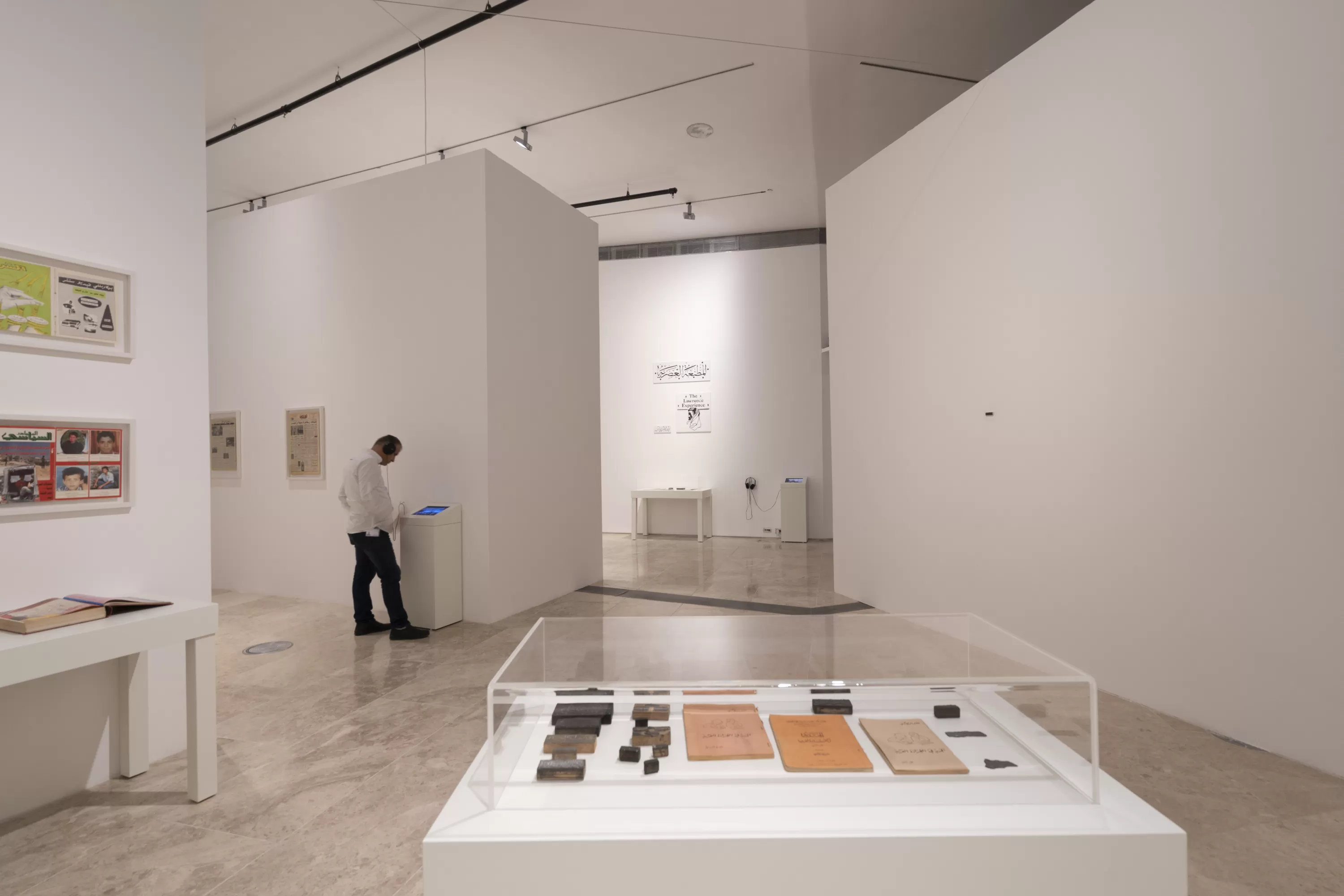
Birzeit: The Palestinian Museum launched its latest exhibition, Printed in Jerusalem: Mustamloun, virtually on YouTube and its other social media platforms. The launch took place after the installation of the exhibition was completed in the exhibition hall of the Museum despite the pandemic and lockdown. The exhibition is organised in partnership with the Palestinian Heritage Museum at Dar Al-Tifel Al-Arabi in Jerusalem and runs until December 2020.
Curated by Baha Jubeh and guest curator Abdel-Rahman Shabane, Printed in Jerusalem: Mustamloun explores the relation between Jerusalemites and publications printed in their city, be their content political, educational, commercial, cultural or touristic, by probing the profession of the mustamly. A mustamly (plural: mustamloun) was tasked with dictating manuscripts to copyists and acted as an intermediary between authors and the public. Historically, this transmission of content was associated with censorship as well. This ancient profession disappeared as modernisation took hold.
The exhibition seeks to analyse the emergence and disappearance duality that was inherent to the city’s publications, which were subject to censorship by the occupation. It explores the city’s political, touristic, and cultural role and attests to Jerusalem’s leadership in printing, and in the development and publication of educational resources. This exhibition also sheds light on aspects of Jerusalem’s cultural and social practices and examines its economic and commercial activity.
This is the second iteration of Printed in Jerusalem, which first opened at Jerusalem’s Palestinian Heritage Museum at Dar Al Tifel AL Arabi in late-2018. It presented a selection from Jerusalem’s Modern Press (Lawrence Press) collection of printing clichés and tools, donated to PHM in 1998.
This iteration presents 200 printing clichés and historical prints from the Modern Press and the Industrial Islamic Orphanage Press, including schoolbooks, commercial, touristic and religious advertisements, political and cultural newspapers and magazines, social event invitation cards, schematic plans and maps. It also presents six thematic curatorial interventions and a video installation about the Industrial Islamic Orphanage Press. The exhibition humanises the narrative by presenting notebooks, journals and printing clichés linked to influential Jerusalemite figures, such as illustrator Fatema Muhib, writer Mahmoud Shuqair, and founder of the Modern Press, Anton Shukri Lawrence. In parallel, the Museum’s Glass Gallery complements the exhibition’s themes by hosting stations of interactive educational games and activities for children and families.
The exhibition was launched virtually by video, with an introduction by General Director of the Museum, Adila Laïdi-Hanieh, PhD, and Director of the Palestinian Heritage Museum, Khaled A. Khatib. Laïdi-Hanieh emphasised the significance of overcoming the challenges imposed by the pandemic and lockdown to realise the exhibition. She also stressed the importance of this iteration of the exhibition, which expands on the original in several aspects by exploring the history of print journalism in Jerusalem and the city’s social life, and by presenting rare and noteworthy printed materials. Laïdi-Hanieh praised the Museum’s first institutional partnership with the Palestinian Heritage Museum and expressed her gratitude to the exhibition’s supporting institutions: The Arab Fund for Economic and Social Development; and A.M. Qattan Foundation through the ‘Visual Arts: A Flourishing Field’ (VAAF) grant, funded by Sweden. She expressed her hope that the public may soon be able to visit the exhibition in person upon the Museum’s reopening.
For his Part, the director of the Palestinian Heritage Museum at Dar Al-Tifel Al-Arabi, Khaled A. Khatib, affirmed the significance of hosting Printed in Jerusalem at the Palestinian Museum, which allows for a wider Palestinian audience to experience the exhibition. He stressed the importance of the Palestinian Museum’s expansion on the original concept and of the development of programmes to accompany the exhibition, regarded as one of the most significant and successful exhibitions organised by the Palestinian Heritage Museum in Jerusalem. He also emphasised the importance of continued partnership with the Palestinian Museum to make the historically significant Dar Al-Tifel collection available to those who are barred from entering Jerusalem.
The Palestinian Museum is organising a series of virtual guided tours of the exhibition to be made available to the public. The tours are led by exhibition curators Baha Jubeh, Abdel-Rahman Shabane, and assistant-curator Sandy Rishmawi. The Museum is also organising a wide-ranging series of online events and activities, which began in mid-July and include lectures, discussions, interactive educational workshops, Object-in-Focus events, performances and more.